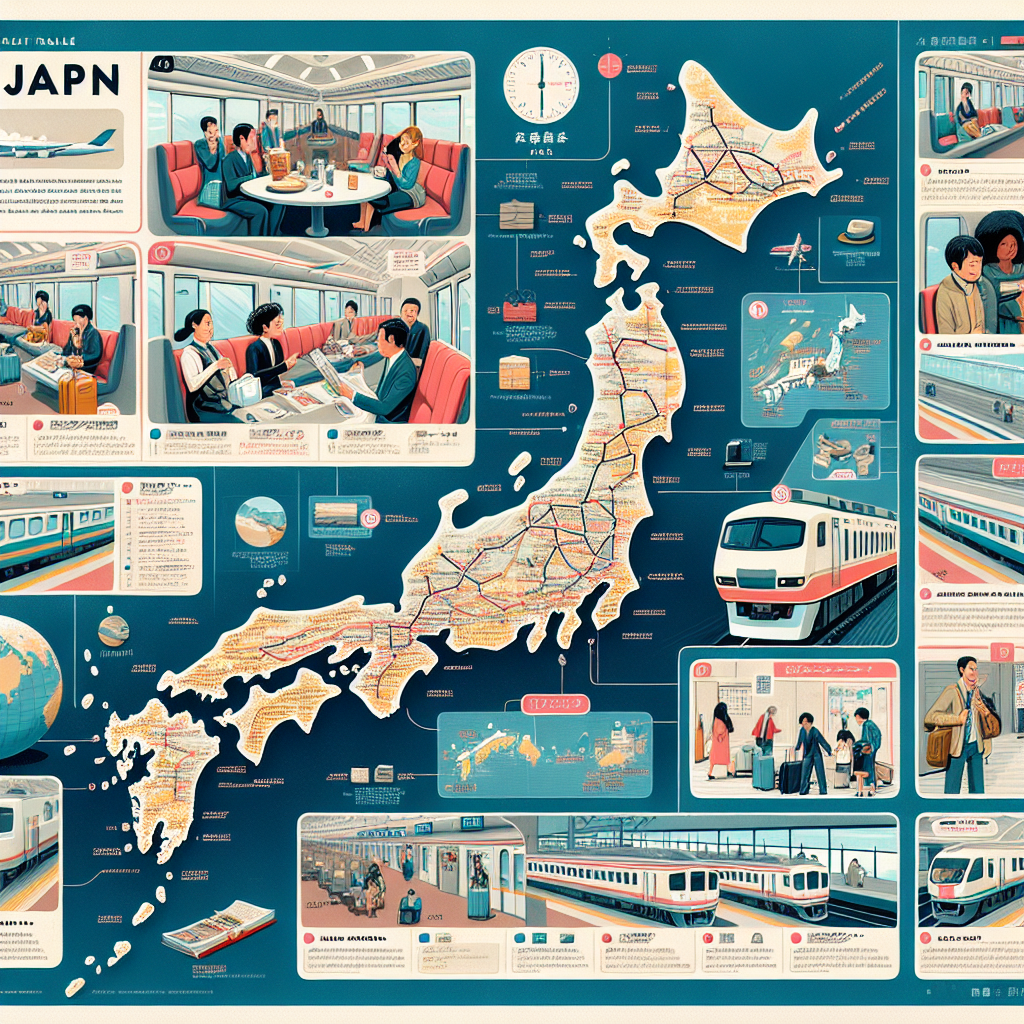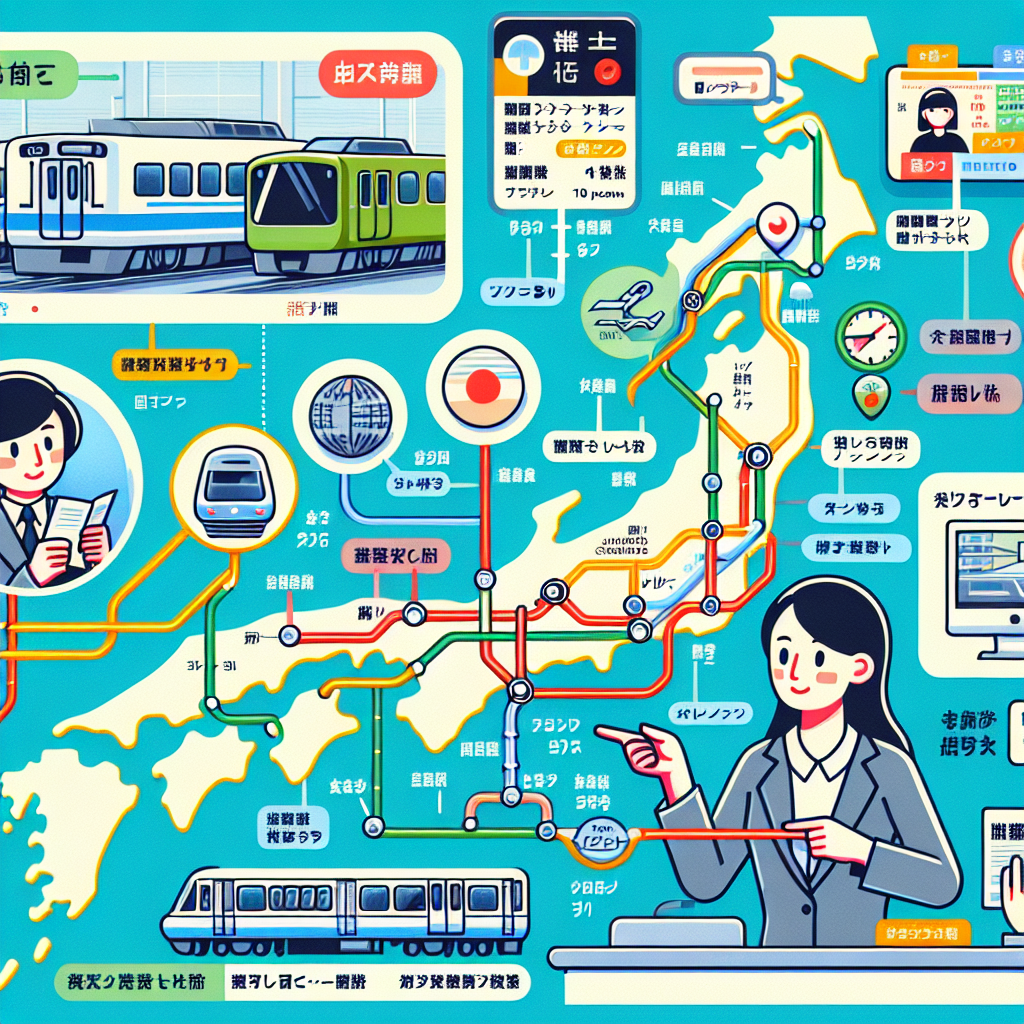Essential Train Routes for Exploring Japan
Traveling through Japan by train is an experience that combines efficiency, comfort, and breathtaking scenery, making it one of the best ways to explore this beautiful country. With an extensive rail network, Japan offers a variety of essential train routes that connect major cities, picturesque towns, and stunning landscapes. One of the most iconic routes is the Shinkansen, or bullet train, which whisks you from one destination to another at remarkable speeds. For instance, the Tōkaidō Shinkansen connects Tokyo to Osaka in just over two and a half hours, allowing you to enjoy the vibrant energy of both cities in a single day. As you glide along the tracks, you’ll be treated to views of Mount Fuji, a sight that is sure to leave you in awe.
Another must-try route is the Limited Express trains that traverse the scenic countryside. The Hida Limited Express, for example, takes you from Nagoya to Takayama, a charming mountain town known for its well-preserved Edo-period architecture. The journey itself is a highlight, as the train winds through lush valleys and past tranquil rivers, giving you a glimpse of rural Japan that many travelers miss. Once you arrive in Takayama, you can explore the local markets and sample delicious Hida beef, making the trip even more rewarding.
If you’re looking to experience Japan’s stunning coastal views, the Noto Peninsula is a fantastic option. The Noto Railway runs along the coastline, offering breathtaking vistas of the Sea of Japan. This route is particularly beautiful during the cherry blossom season in spring or when the leaves change color in autumn. As you travel, you can stop at quaint fishing villages and enjoy fresh seafood, immersing yourself in the local culture.
For those interested in Japan’s rich history, the route from Kyoto to Hiroshima is essential. The Shinkansen will get you there in about two hours, but the journey is just the beginning. In Hiroshima, you can visit the Peace Memorial Park and Museum, which provide a poignant reminder of the city’s past. Afterward, a short ferry ride will take you to Miyajima Island, home to the famous floating torii gate of Itsukushima Shrine. This combination of destinations offers a profound insight into Japan’s resilience and beauty.
As you plan your train travels, it’s important to consider the Japan Rail Pass, which can save you a significant amount of money if you intend to travel extensively. This pass allows unlimited travel on most trains, including the Shinkansen, for a set number of days. It’s a convenient option that not only simplifies your travel logistics but also encourages spontaneous adventures along the way.
In addition to the major routes, don’t overlook the local trains that connect smaller towns and rural areas. These trains often provide a more intimate glimpse into daily life in Japan. For example, the Oigawa Railway takes you through tea plantations and picturesque landscapes in Shizuoka Prefecture, offering a serene escape from the hustle and bustle of city life.
Ultimately, traveling Japan by train opens up a world of possibilities, allowing you to experience the country’s diverse culture, history, and natural beauty. With each journey, you’ll find that the train is not just a means of transportation but a gateway to unforgettable memories and adventures. So, pack your bags, grab your Japan Rail Pass, and get ready to explore the essential train routes that make Japan a traveler’s paradise.
Navigating Japan’s Ticketing System: A Comprehensive Guide

Traveling through Japan by train is an experience that combines efficiency, comfort, and breathtaking scenery. However, navigating the ticketing system can seem daunting at first, especially for first-time visitors. Fortunately, with a little guidance, you can easily master the ins and outs of purchasing tickets and planning your journey.
To begin with, understanding the different types of trains is essential. Japan boasts a variety of train services, including the famous Shinkansen, or bullet trains, which are known for their speed and punctuality. Additionally, there are local trains, express trains, and limited express trains, each serving different routes and purposes. Knowing which type of train to take can save you both time and money, so it’s worth doing a bit of research before your trip.
Once you have a grasp of the train types, the next step is to familiarize yourself with the ticketing options available. For tourists, the Japan Rail Pass is a fantastic choice if you plan to travel extensively across the country. This pass allows unlimited travel on most JR trains for a set number of days, making it a cost-effective option for those eager to explore multiple cities. However, it’s important to purchase the pass before arriving in Japan, as it is not available for sale within the country.
If your travel plans are more localized, single journey tickets or regional passes may be more suitable. These can be purchased at ticket machines or ticket counters found in train stations. Most ticket machines have an English language option, which simplifies the process significantly. When using a ticket machine, simply select your destination, choose the type of train, and pay for your ticket. It’s as easy as that!
In addition to traditional ticketing, Japan has embraced technology with mobile apps that can help streamline your travel experience. Apps like Hyperdia and Google Maps provide real-time information on train schedules, routes, and even platform numbers. This can be particularly helpful when you’re in a bustling station and need to find your way quickly.
Moreover, it’s worth noting that Japan’s train system is known for its punctuality. Trains typically run on time, so it’s advisable to arrive at the station a few minutes early. If you do happen to miss a train, don’t worry; the next one will likely be along shortly, as services are frequent.
When it comes to seating, you’ll find that most trains offer both reserved and non-reserved options. If you’re traveling during peak seasons or on popular routes, reserving a seat in advance is a wise choice. This can be done online or at ticket counters. On the other hand, if you’re feeling adventurous and prefer flexibility, non-reserved seats allow you to hop on any train without prior booking, although you may have to stand during busy times.
Lastly, don’t forget to enjoy the journey itself. The views from the train can be stunning, especially when traveling through rural areas or along the coast. Take a moment to relax, soak in the scenery, and appreciate the convenience of Japan’s train system. With a little preparation and an open mind, navigating Japan’s ticketing system will become second nature, allowing you to focus on what truly matters: experiencing the beauty and culture of this incredible country. So pack your bags, grab your tickets, and get ready for an unforgettable adventure!
Top Tips for a Seamless Train Travel Experience in Japan
Traveling through Japan by train is an experience that combines efficiency, comfort, and breathtaking scenery. To ensure your journey is as seamless as possible, there are several tips and tricks that can enhance your travel experience. First and foremost, familiarize yourself with the Japan Rail Pass, which is a fantastic option for tourists. This pass allows unlimited travel on most trains, including the famous Shinkansen, or bullet trains, for a set number of days. Purchasing the pass before arriving in Japan can save you a significant amount of money, especially if you plan to visit multiple cities.
Once you have your pass, it’s essential to understand the different types of trains available. The Shinkansen is the fastest option, whisking you from one city to another in a matter of hours. However, local and express trains also offer unique experiences and can take you to less touristy areas. For instance, the Limited Express trains provide a comfortable ride with fewer stops, making them a great choice for reaching destinations like Kyoto or Hiroshima. As you plan your itinerary, consider mixing different train types to enjoy both speed and scenic routes.
Next, it’s crucial to be aware of the train schedules. Japan’s rail system is known for its punctuality, so arriving a few minutes early is always a good idea. You can easily check train times using various apps or websites, which provide real-time updates and platform information. Additionally, many train stations have English signage, making navigation straightforward. However, if you ever feel lost, don’t hesitate to ask a station attendant for help; they are usually very friendly and willing to assist.
When it comes to purchasing tickets, you have several options. While the Japan Rail Pass is excellent for long-distance travel, you can also buy individual tickets at ticket machines or counters. The machines often have an English language option, making the process user-friendly. If you’re traveling during peak seasons, such as cherry blossom season or Golden Week, it’s wise to reserve your seats in advance. This can be done online or at ticket offices, ensuring you have a guaranteed spot on your desired train.
Packing light is another essential tip for a smooth train journey. Train stations often have stairs and escalators, and navigating through crowded platforms with heavy luggage can be cumbersome. A small suitcase or a backpack will make it easier to move around and find space for your belongings on the train. Additionally, many trains offer overhead racks for smaller bags, so you can keep your essentials close at hand.
As you travel, take advantage of the onboard amenities. Many Shinkansen trains have food carts that offer delicious bento boxes and drinks, allowing you to enjoy a meal while taking in the stunning views. Don’t forget to look out the window; the landscapes change dramatically as you travel from city to city, showcasing everything from urban skylines to serene countryside.
Lastly, embrace the culture of train travel in Japan. It’s common for passengers to be quiet and respectful, so consider this when you board. Enjoy the peaceful atmosphere, and perhaps take a moment to reflect on your journey or plan your next adventure. By following these tips, you’ll not only navigate Japan’s train system with ease but also create unforgettable memories along the way. Happy travels!


